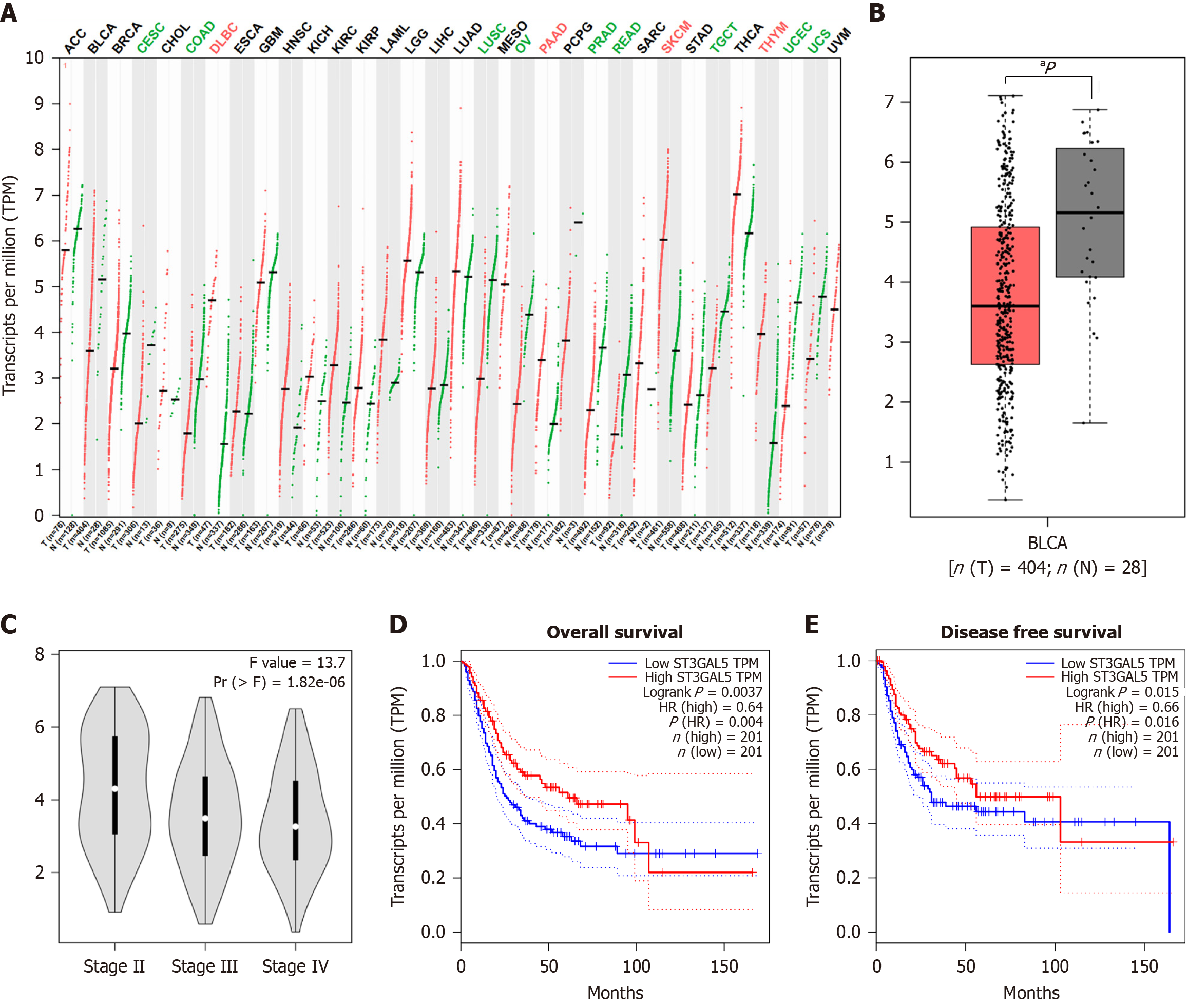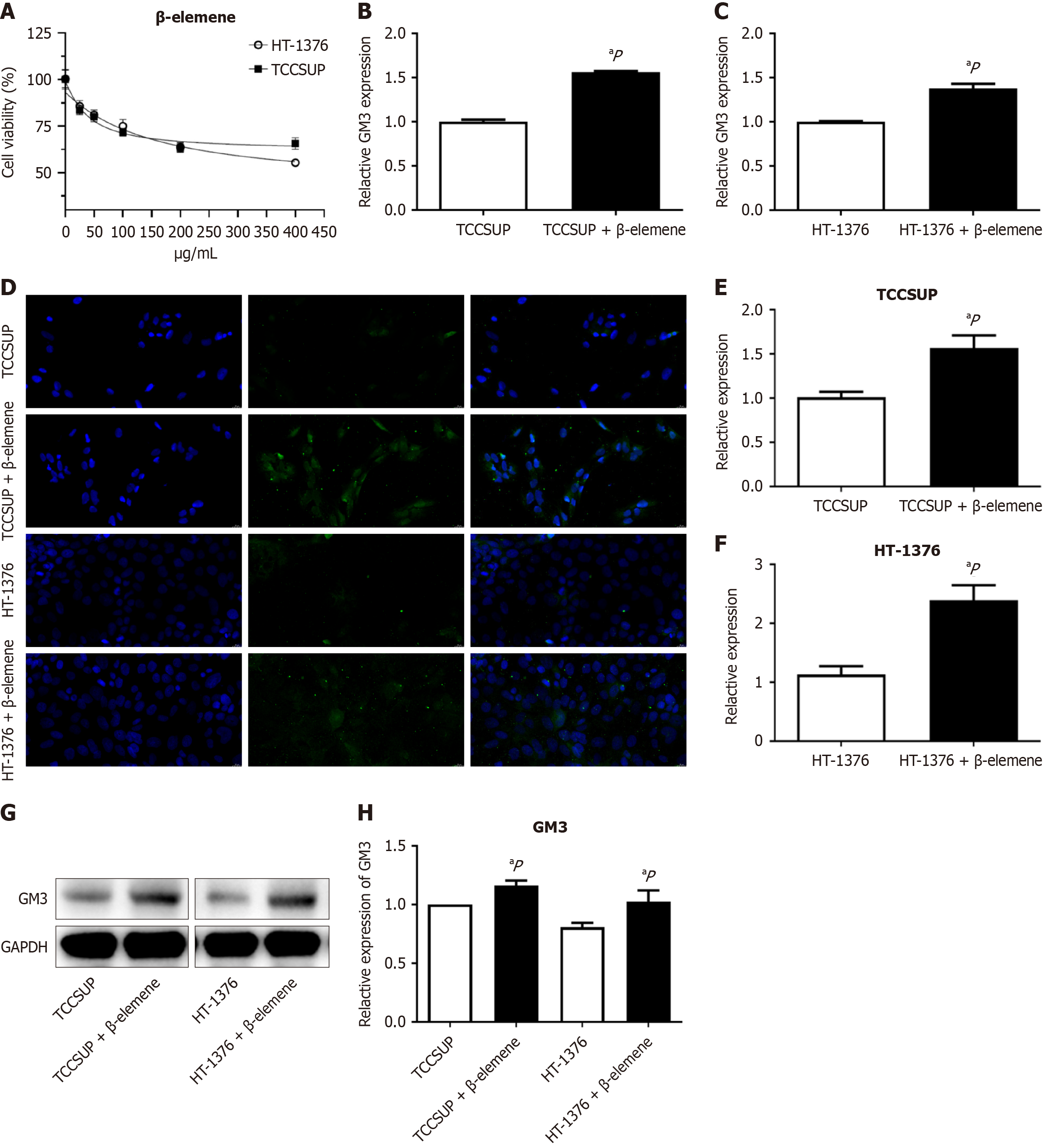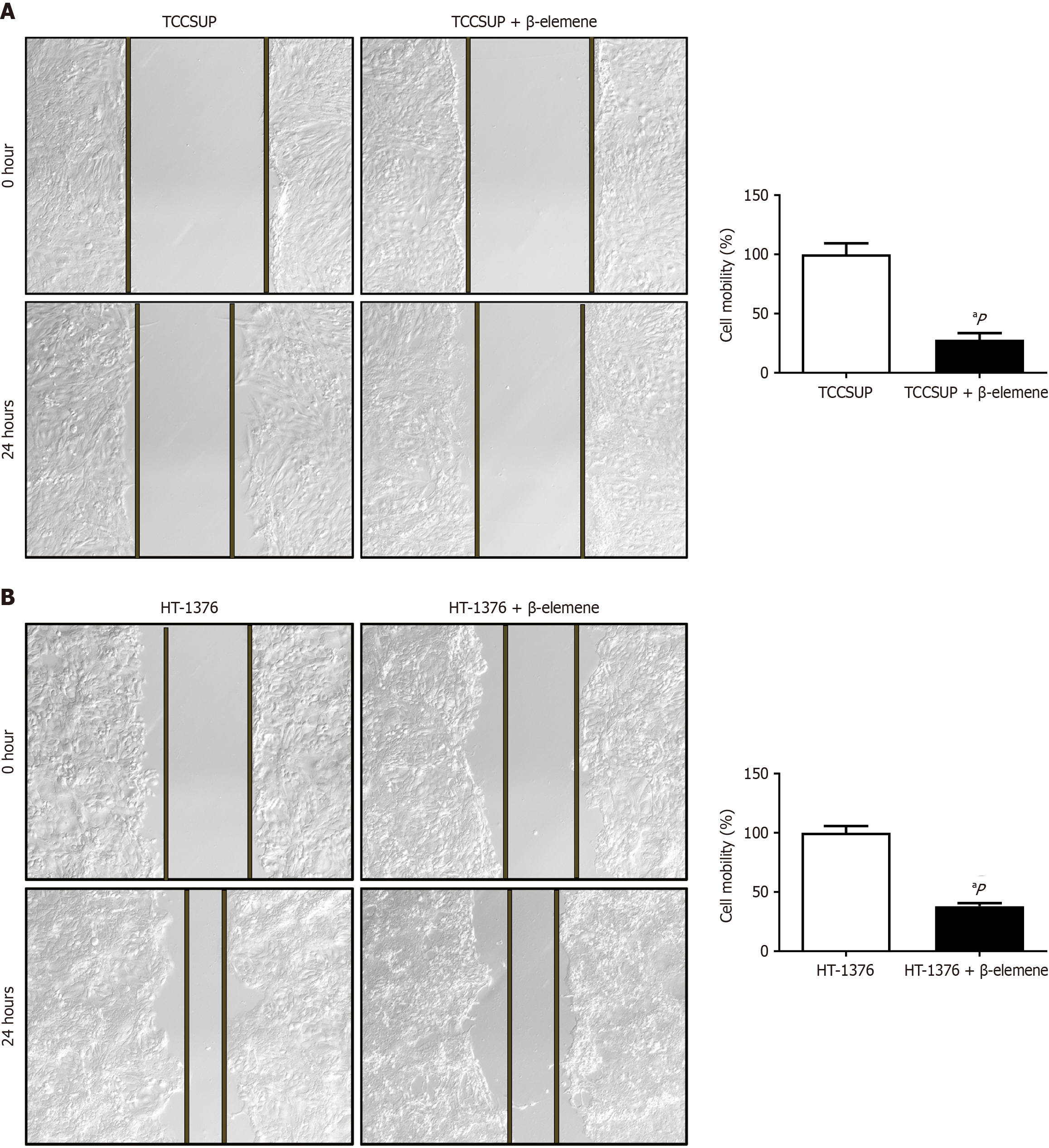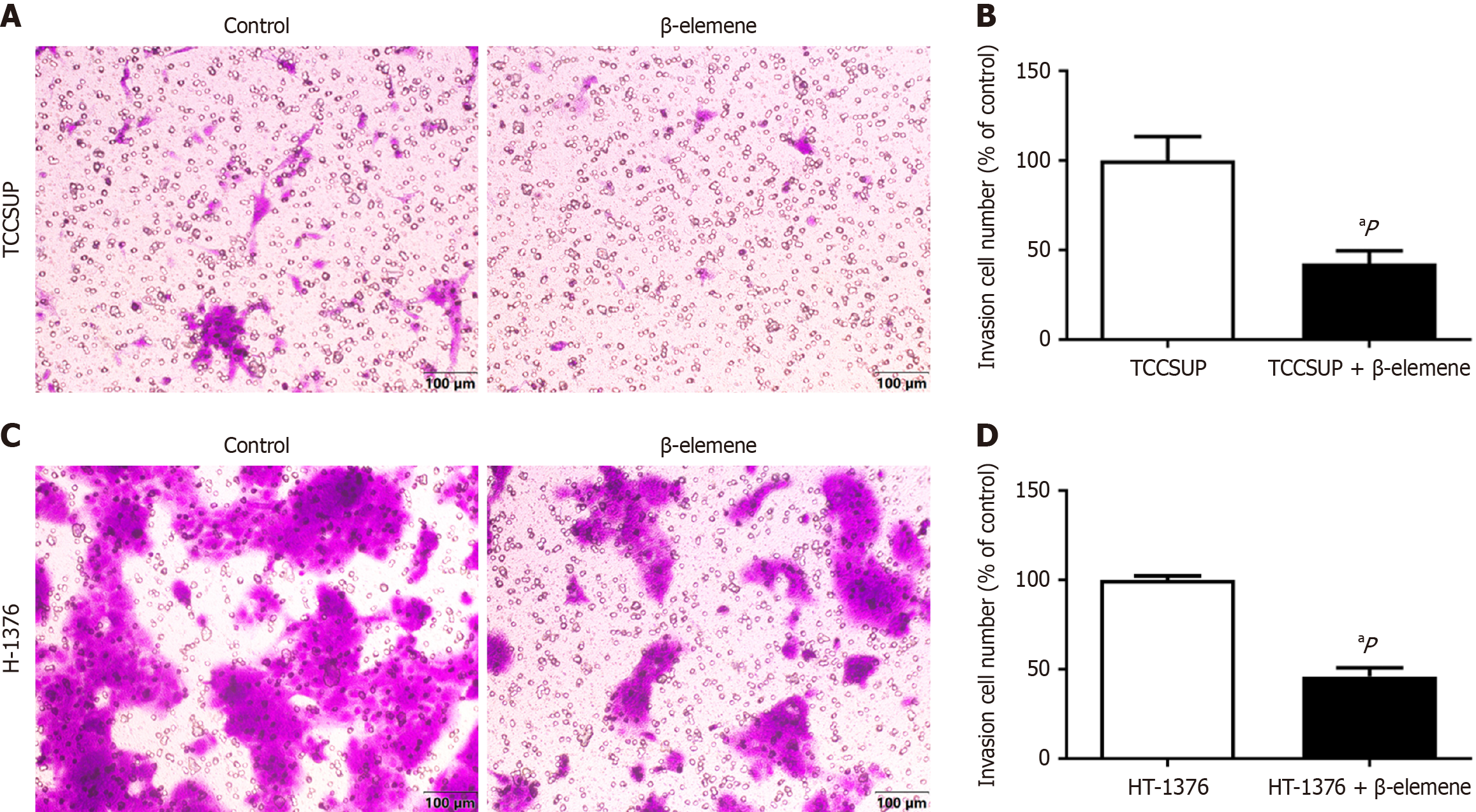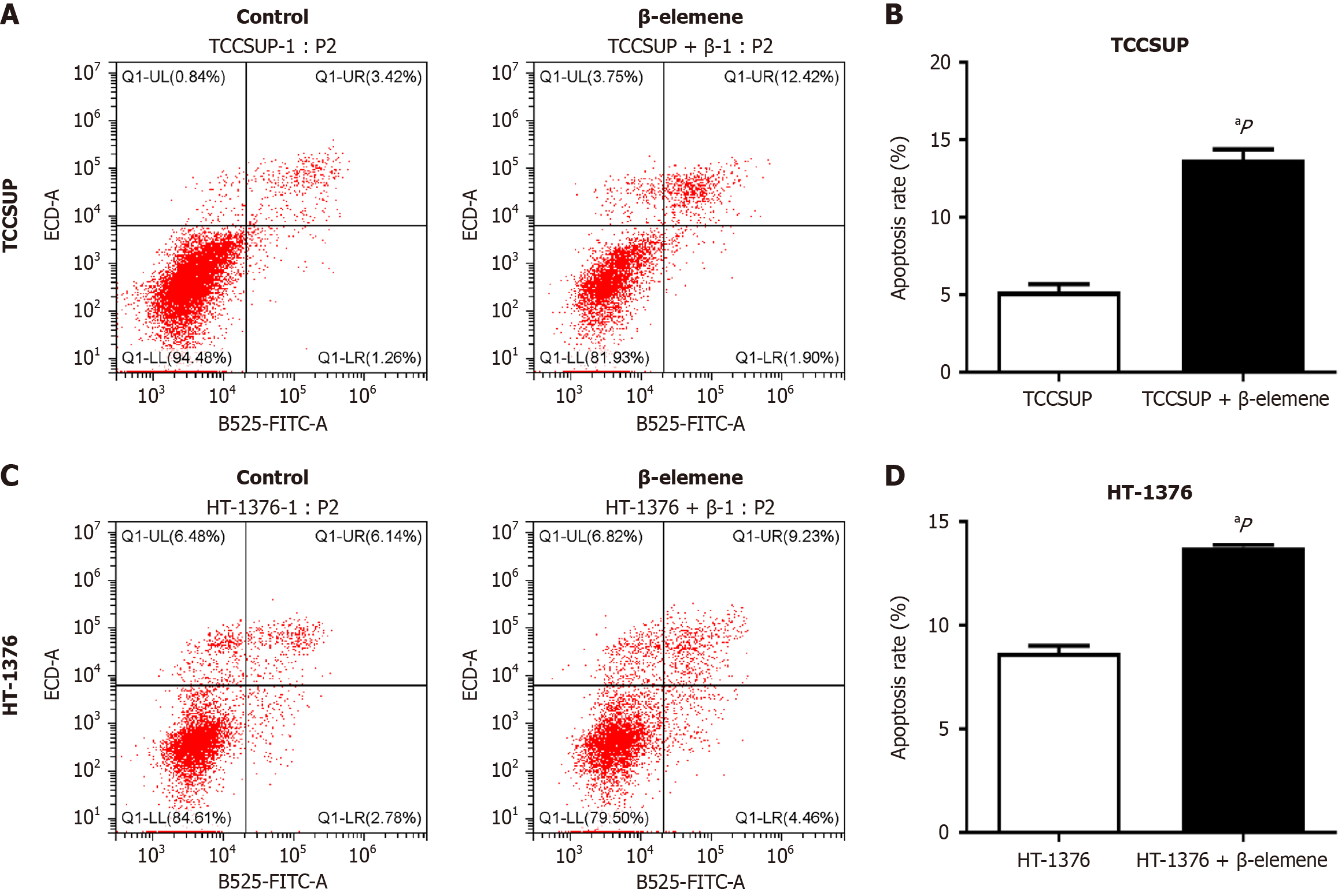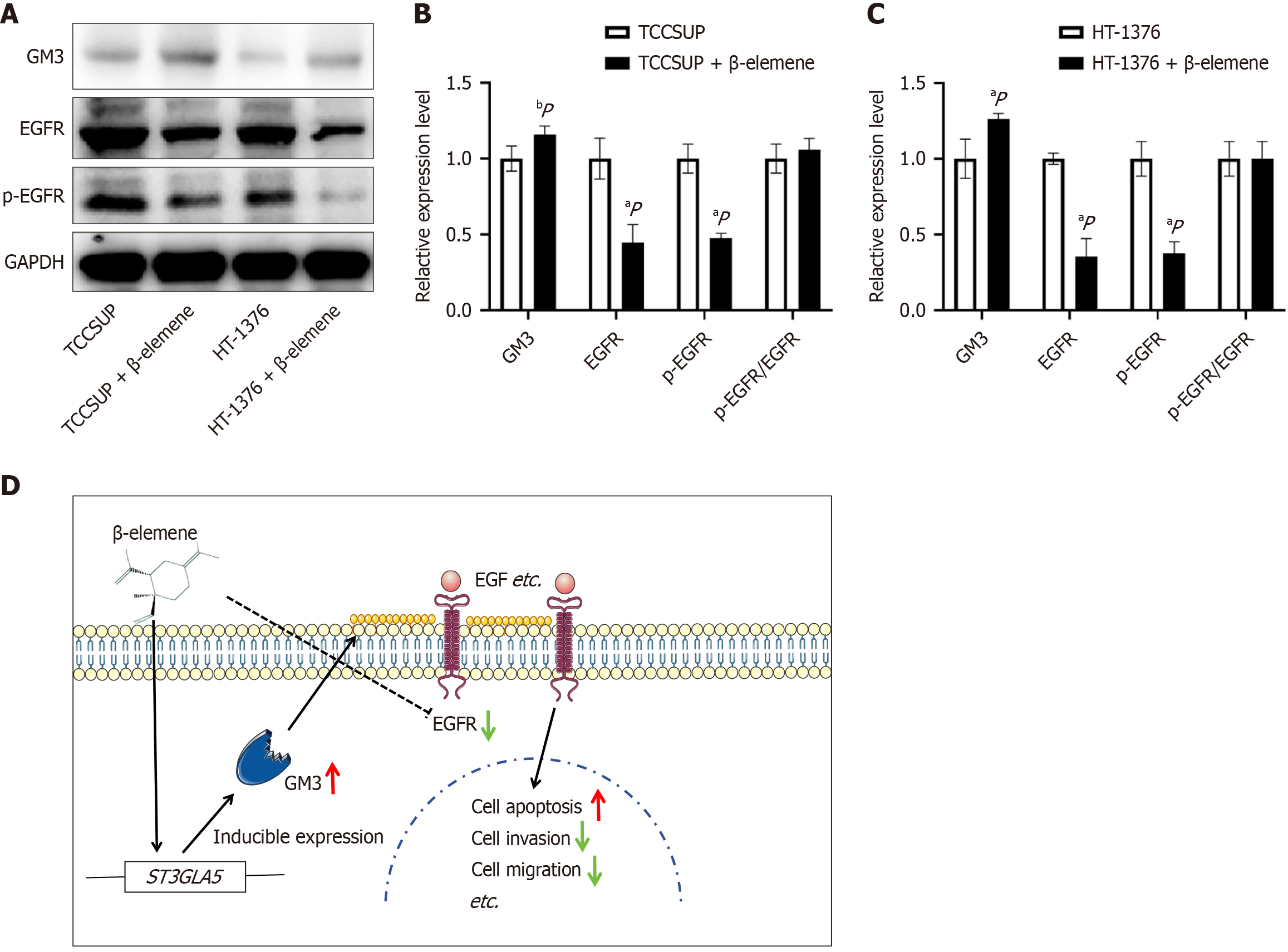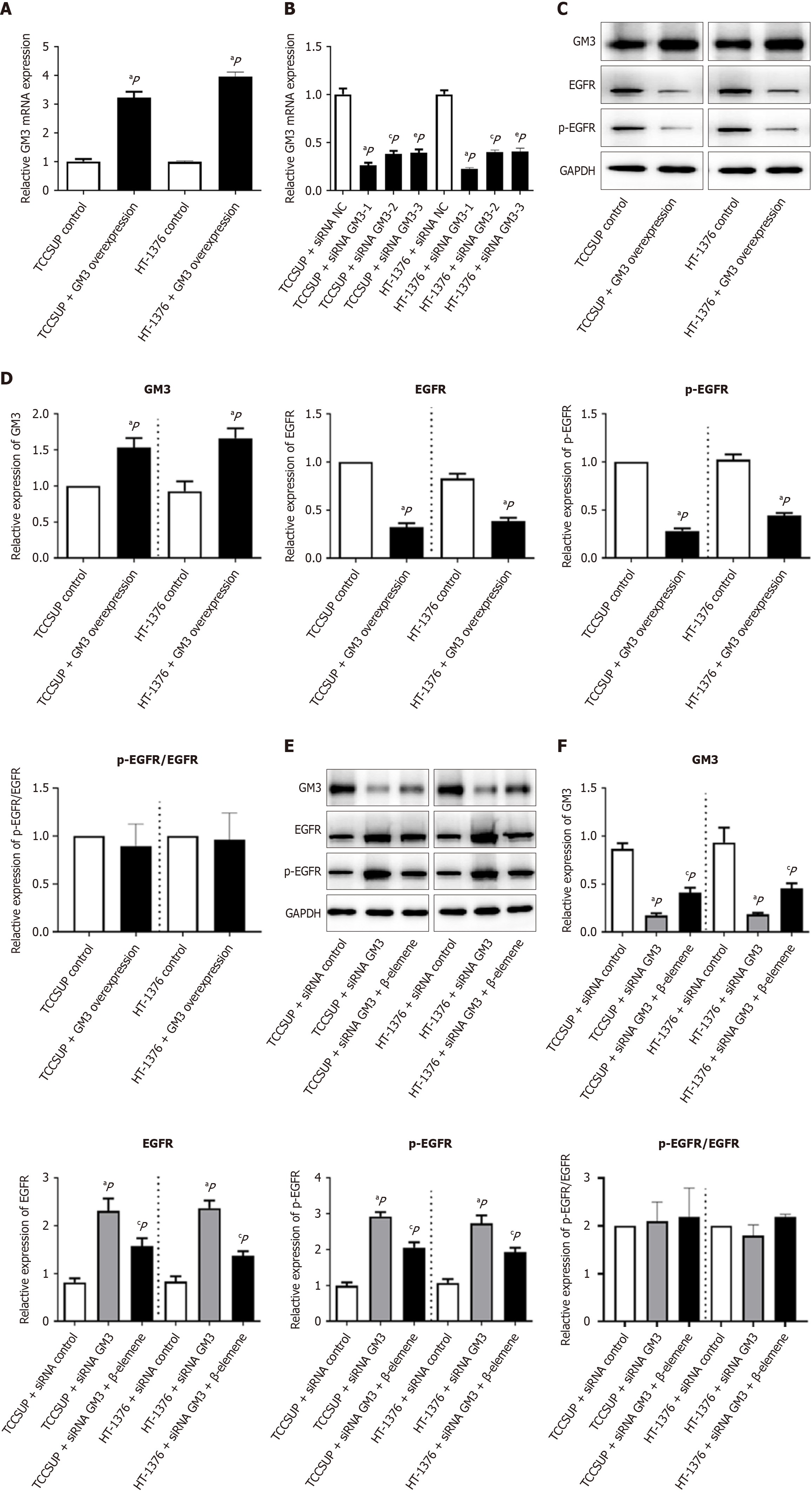Copyright
©The Author(s) 2025.
World J Clin Urol. Aug 12, 2025; 14(2): 109933
Published online Aug 12, 2025. doi: 10.5410/wjcu.v14.i2.109933
Published online Aug 12, 2025. doi: 10.5410/wjcu.v14.i2.109933
Figure 1 GEPIA2 data mining.
A: Compared with that of normal samples, GM3 expression was down-regulated in 15 types of pathological tumors and up-regulated in 13 types of pathological tumors; B: GM3 was expressed in low levels in bladder cancer (BLCA) cells relative to that in the para-tissues (aP < 0.05); C: The higher the BLCA pathological stage, the lower the GM3 expression; D: High expression of GM3 was associated with better overall survival for patients with BLCA according to the GEPIA 2 database (HR = 0.64, Log-rank P = 0.004); E: High expression of GM3 was associated with better disease-free survival for patients with BLCA according to the GEPIA 2 database (HR = 0.66, Log-rank P = 0.016).
Figure 2 The CCK8 assay was used to screen the intervention concentration of β-elemene and the effect of β-elemene intervention on the expression of GM3 protein gene and protein in cells.
A: CCK8 detection showed that increase in β-elemene concentration induced a gradual decrease in cell activity until the concentration reached 200 μg/mL; further increase in concentration did not induce pronounced changes; B and C: Real-time reverse transcriptase-polymerase chain reaction showed that β-elemene increases GM3 gene expression in TCCSUP and HT-1376 bladder cancer (BLCA) cell lines (aP < 0.05); D: Immunofluorescence showed that GM3 was localized and expressed in TCCSUP and HT-1376, green for GM3 and blue for DAPI; E and F: Statistics showed that β-elemene increased GM3 expression in TCCSUP and HT-1376 cells (aP < 0.05); G: Western blotting showed that β-elemene increased GM3 protein expression in TCCSUP and HT-1376 BLCA cell lines; H: Β-elemene increased GM3 protein expression with statistical difference. Western blotting showed that β-elemene increased GM3 protein expression in TCCSUP and HT-1376 BLCA cell lines (aP < 0.05).
Figure 3 Detect the changes in the migration ability of cell clusters after 24 hours of treatment.
A: The migratory distance of TCCSUP cells significantly decreased (aP < 0.05); B: The migratory distance of HT-1376 cell also significantly reduced (aP < 0.05).
Figure 4 Detect the changes in the invasion ability of the cell population after 24 hours of treatment.
A and C: Crystal violet staining showed that the number of BLCA cells (TCCSUP (A) and HT-1376 (C)) penetrating the positron emission tomography membrane decreased significantly after 24 hours of treatment with β-elemene; B and D: The number of migrating TCCSUP (B) and HT-1376 (D) cells significantly reduced as shown in the bar chart (aP < 0.05).
Figure 5 Detect the change in the percentage of apoptotic cells after 24 hours of treatment.
The application of β-elemene in flow cytometry revealed a remarkable enhancement in apoptosis induction: A and B: TCCSUP cells exhibiting an increase by 1.8-fold (aP < 0.05); C and D: HT-1376 cells experiencing an impressive surge of 80% (aP < 0.05).
Figure 6 The expression changes of GM3-EGFR axis proteins after stimulation by β-elemene and the existing signal transduction mechanisms.
A: The Western blot analysis specifically demonstrated differential protein expression in β-elemene treated and non-treated states; B and C: Statistical analysis revealed that GM3 expression increased following β-elemene treatment, while epidermal growth factor receptor (EGFR) and phosphor EGFR (p-EGFR) expression significantly decreased (aP < 0.05). However, the p-EGFR/EGFR ratio did not show a significant change (bP > 0.05); D: A schematic diagram illustrating the findings of this study is presented.Both GM3 and EGFR proteins were expressed on the membrane surface, where their expression levels exhibited a competitive and complementary relationship. β-elemene concurrently upregulated the expression of both GM3 gene and protein, while downregulating the expression of EGFR protein and its phosphorylated form. This modulation ultimately promoted apoptosis and inhibited the migration and invasion of bladder cancer cells.
Figure 7 After editing the expression of the GM3 gene, the effect of β-elemene on the expression changes of the GM3-EGFR axis was verified.
A: After mRNA detection of GM3 overexpression, intracellular GM3 gene increased to 3-4 times of the original state (aP < 0.05); B: SiRNA interference reduced intracellular GM3 gene to 1/2 of the original state (aP < 0.05, cP < 0.05, eP < 0.05); C and D: After GM3 gene overexpression, intracellular protein expression increased simultaneously, and epidermal growth factor receptor (EGFR) and phosphor EGFR (p-EGFR) expression decreased. The p-EGFR/EGFR ratio did not change; E and F: After GM3 gene expression was inhibited, intracellular protein expression decreased, and EGFR and p-EGFR expression increased. β-elemene can reverse the expression effect of GM3-EGFR/pEGFR. There was no significant difference in EGFR/EGFR ratio.
- Citation: Li FY, Wang Y, Zhang YJ. β-elemene inhibits bladder cancer cell through the expression of cell membrane protein GM3. World J Clin Urol 2025; 14(2): 109933
- URL: https://www.wjgnet.com/2219-2816/full/v14/i2/109933.htm
- DOI: https://dx.doi.org/10.5410/wjcu.v14.i2.109933









